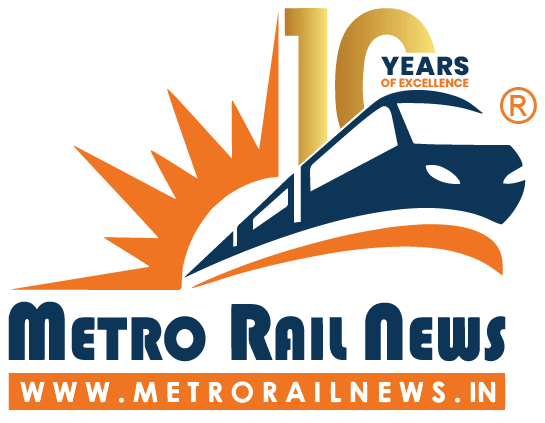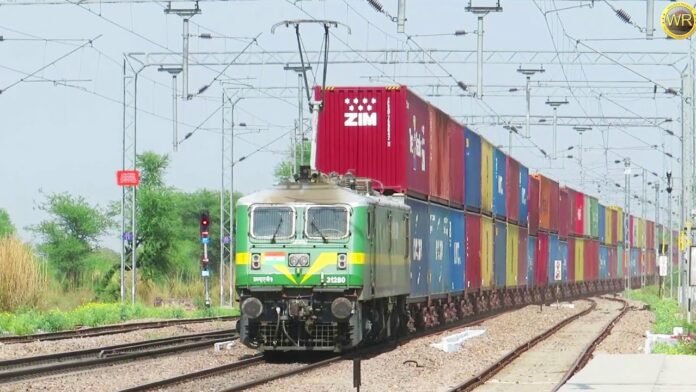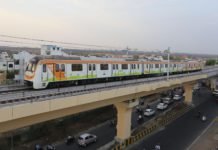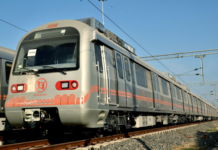Table of Contents
Overview of the Freight Rail Industry
The Indian freight rail industry is a critical component of the country’s transportation infrastructure, primarily operated by Indian Railways (IR), which is the fourth-largest rail network in the world.
Freight Rail, commonly referred to as cargo or goods trains consists of specialised rail cars designed for the transportation of various types of cargo across intended destinations. Rail transport is the preferred mode for freight movement due to its high energy efficiency and cost-effectiveness. The Freight Rail industry plays a crucial role in India’s transportation infrastructure, serving as the backbone of the country’s logistics sector.
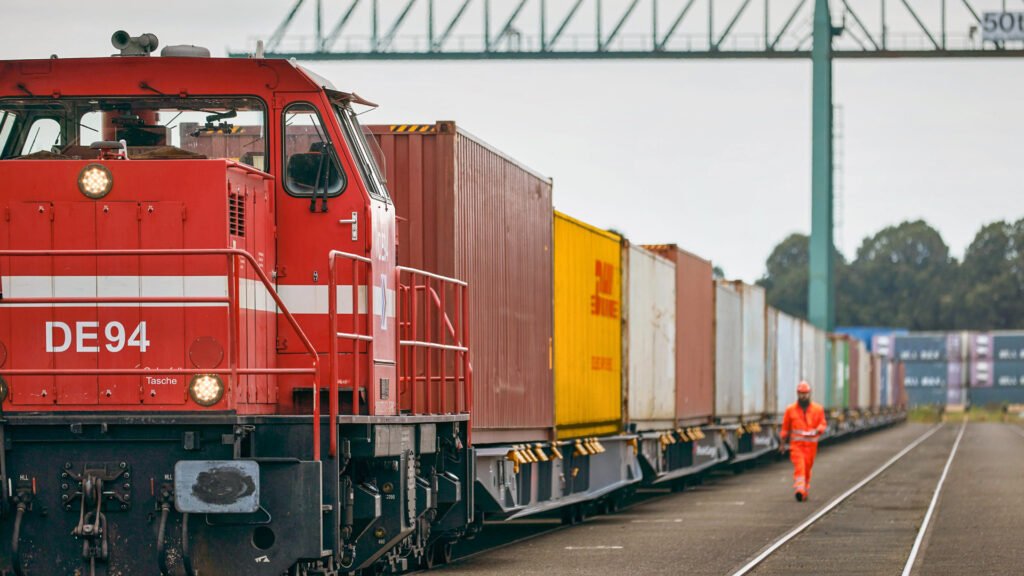
The industry handles a wide range of commodities, including coal, iron ore, steel, food grains, cement, petroleum products, and fertilisers. Annually, Freight Rail moves approximately 1.2 billion tonnes of goods over an extensive network spanning 68,000 kilometres.
Recent Developments and Achievements
Key advancements in the industry include the fast-tracking of two Dedicated Freight Corridors (DFC):
- Western DFC: Connecting Jawaharlal Nehru Port to Dadri.
- Eastern DFC: Stretching from Ludhiana to Dankuni.
As of June 2024, the Freight Rail sector reported earnings of INR 14,798.11 crore, reflecting the ongoing modernisation and expansion efforts in India’s freight rail infrastructure.
Annual Freight loading from 2017 to 2023
In 2022-23, the Indian Freight Industry recorded its best performance with a freight loading of 1512 MT. With an incremental loading of 94 MT, the industry experienced 7% growth compared to the 1418 MT achieved in 2021-22.
Key Facts About India’s Freight Rail Industry
- Total Freight Trains: 9,146
- Vision 2024: Aiming for 2,024 million tonnes (MT) of freight loading.
- Revenue from Freight Traffic: $17.2 billion
- June 2024 Freight Revenue: Indian Railways earned ₹14,798.11 crore, an increase from ₹13,316.81 crore in June 2023.
- Freight Train Speed: The average speed increased to 44.36 km/h during 2021-22, up from 42.97 km/h in 2020-21, reflecting a 3.23% improvement.
- National Rail Plan: Targeting an increase in the rail share of freight traffic from the current 27% to 45% by 2030.
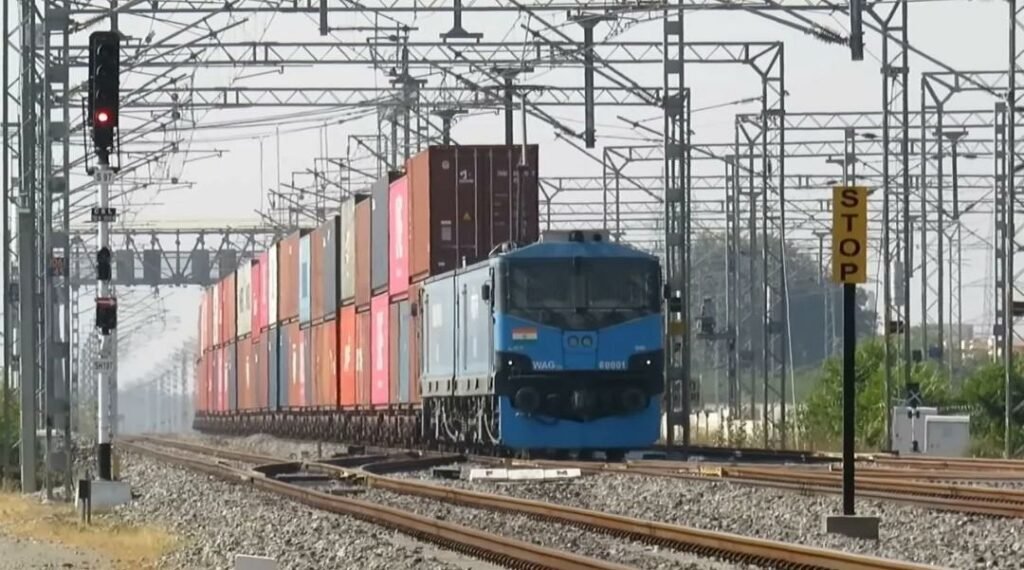
Asset Tracking and Maintenance in the Freight Rail Industry
Asset tracking in the freight rail industry refers to the use of technology to monitor and manage the location, condition, and utilisation of rail assets such as containers, railcars, and chassis. This practice is becoming increasingly vital as the industry embraces digitisation to enhance efficiency, safety, and operational effectiveness. It involves using technologies such as GPS, RFID, and barcode scanners. Through this process, the risk of theft and loss can be mitigated.

Asset tracking software integrates all the elements of asset tracking in one interface. Rather than maintaining physical records of all the assets, the software helps to digitally store and moderate the information according to their maintenance needs.
Linking Asset Tracking with Rail Fleet
As the rail freight sector shows significant growth, the Indian Railways face a few infrastructural challenges, including outdated tracks, inadequate terminal facilities, and connectivity issues. These issues restrict rail freight operations and efficiency. It is crucial to address these challenges to enhance the capacity of the rail fleet and foster sustainable growth.
In 2024, the Indian Railways saw substantial growth in network electrification, track commissioning, automatic signalling installation, and bridge construction. In India, logistics costs account for over 13% of the GDP, making it crucial to invest in infrastructure.
The need for better freight rail infrastructure led to the development of Dedicated Freight Corridors (DFCs). The corridors separate the busy passenger routes and enable faster movement of goods. With the integration of various ministries to investigate alternative routes, an effort is being made to optimise fares and enhance infrastructure.
Key Components of Asset Tracking in Freight Rail
- Radio Frequency Identification (RFID):RFID devices are small electronic devices that can store information and use radio waves to identify objects. They do not require any line of sight to scan and are known for their accuracy and efficiency. However, these devices have high up-front costs, privacy and security issues, and are easily influenced by signal interference.
- IoT Technology:Asset tracking systems leverage Internet of Things (IoT) sensors and GPS technology to provide real-time data on the location and status of assets. This enables operators to monitor freight during transit, ensuring timely and efficient deliveries.
- Cloud-Based Software:Data from tracking devices is transmitted to cloud-based platforms, providing centralised access to asset conditions, movements, and historical data. This ensures quick and informed decision-making.
- Condition Monitoring:Advanced systems feature sensors to monitor environmental conditions such as temperature and humidity, which is critical for perishable goods. Maintaining optimal conditions helps prevent spoilage and ensures the quality of sensitive cargo.
- Security Features:Tracking systems enhance security by providing alerts for unauthorised access or movement of assets. Door sensors, for instance, can notify operators of unauthorized container openings, improving safety measures.
- Data Analytics:Analytical tools help identify operational inefficiencies like prolonged loading/unloading times or excessive dwell times at terminals. This data is valuable for optimising logistics, reducing delays, and enhancing overall performance.
Maintenance
Maintenance is crucial in the freight rail industry due to the high speeds, heavy loads, and complexity of railway systems. Proper maintenance ensures safety, reliability, and efficiency.
Types of Maintenance:
- Preventive Maintenance: Regularly scheduled maintenance activities designed to prevent breakdowns and extend asset life. This includes inspections, servicing, and replacements based on usage patterns.
- Predictive Maintenance: This involves using data from asset tracking systems to predict when maintenance should be performed based on actual conditions rather than a fixed schedule. This approach minimises downtime and reduces costs associated with over-maintenance.
What Assets Need to be Tracked?
Role of Asset Tracking in Maintenance in the Freight Rail Industry
- Real-Time Monitoring: Asset tracking systems enable continuous monitoring of rail assets, including trains, containers, and railcars. This real-time data allows operators to identify maintenance needs promptly, reducing the risk of unexpected breakdowns and ensuring that assets are always in optimal condition. For instance, GPS monitoring helps track the exact location and status of rolling stock, allowing for timely interventions when issues arise.
- Predictive Maintenance: By analysing data collected from sensors on rolling stock, operators can predict when maintenance should be performed based on actual usage and performance trends rather than fixed schedules. This approach minimises downtime and helps avoid costly repairs by addressing issues before they escalate.
- Improved Maintenance Scheduling: Asset tracking facilitates better planning and scheduling of maintenance activities by providing insights into asset availability and condition. This ensures that maintenance can be conducted during off-peak hours or when assets are not in use, thereby minimising disruption to operations. Setting up reminders for regular inspections and maintenance can further reduce the risk of unexpected failures.
- Condition Monitoring: Sensors can monitor various conditions such as temperature, humidity, and mechanical performance. For example, refrigerated containers can have integrated sensors that alert operators if temperatures exceed safe limits, enabling immediate action to prevent spoilage of perishable goods.
- Data-Driven Decision Making: The analytics capabilities of asset tracking systems allow for the identification of inefficiencies in maintenance practices. Detailed reports can highlight long loading/unloading times or frequent repairs on specific assets, providing management with actionable insights to optimize processes.
Benefits of Asset Tracking
Improved Visibility:
Enhanced tracking allows stakeholders to have complete visibility into the supply chain, helping manage expectations regarding delivery timelines. According to a study by McKinsey, companies that utilise real-time data can improve operational efficiency by up to 30%.
Lower Operational and Maintenance Costs
The asset tracking system minimises the expenses associated with asset misplacement by reducing theft, optimising maintenance schedules, and minimising downtime due to equipment failures. A report from Deloitte indicates that predictive maintenance can reduce maintenance costs by up to 25%.
Reduces Human Error
Employees can save a lot of time after scanning the details such as manufacturer, spare parts suppliers, maintenance history, and operations and maintenance methods. With the help of strong asset tracking and management systems, the employees can easily and effectively record maintenance chores, reducing the human errors that often occur due to manual documentation techniques.
Compliance and Reporting
Asset tracking helps organisations supply precise information to stakeholders and regulators when they are clear about their assets and how they are employed. An efficient asset management system helps to address the risks linked to compliance, enabling businesses to uphold a high standard of compliance. The accountability, transparency, and governance principles help businesses to build trust and confidence with investors and clients.
Challenges in Implementing Asset Tracking
- Data Security
The complexity and interconnectivity of digital systems raise the risk to data security. Cyber attacks can harm sensitive data by entering through IoT, RFID, and cloud-based systems. Safeguarding and managing enormous amounts of data becomes challenging as cyber threats change, requiring regular updates.
- Lack of Standardization
With no set rules and guidelines, the chances of inconsistencies in data collection, reporting, and decision-making increase. It becomes difficult to track and monitor assets effectively, resulting in inefficiencies, errors, and potential financial losses. It also makes it challenging to compare asset performance, operational costs, and maintenance practices, hindering the process of informed decision-making and proper asset utilisation.
- High Upfront Costs
Upfront costs include the purchase of machinery, equipment, or technology and the hiring and training of personnel to use and maintain these assets. This financial load may hamper a business’s cash flow and profitability. The initial cost of some asset management components is higher than that of others; for example, implementing RFID is more expensive than using asset tags or barcode labels.
- Skilled Personnel
Introducing new asset-tracking processes and technologies requires skilled personnel who are often resistant to change. Recruiting and training staff can be time-consuming and costly. Inadequate training or reluctance to adopt new systems may result in inefficiencies, impacting the overall success of asset tracking initiatives.
Components of Rail Fleet Management
Case Study: SALUS Asset Tracking Solution
Digital transformation is continuously helping the rail industry become efficient and productive and tackle challenges like infrastructure efficiency, energy management, and natural resource reduction. The industry utilises asset tracking to become approximately $12.6 billion by 2025.
SALUS: Serviceable Asset Location & Utilisation System
SALUS is an advanced technical solution designed to address the inefficiencies of existing asset-tracking technologies, particularly in terms of cost, power consumption, accuracy, and flexibility. It is tailored for industries struggling to track equipment, devices, and personnel across large infrastructures.
The system, known as Serviceable Asset Location & Utilisation System (SALUS), enables real-time tracking and monitoring of an asset’s location, status, and condition, both within and outside a designated network. One of its key features is the ability to transmit radio signals securely over long distances, making it ideal for extended infrastructure and remote asset-tracking applications. SALUS offers a more efficient and reliable approach to asset management over vast areas, ensuring seamless operations across the board.
Working of SALUS
SALUS operates by tracking tags within a defined radio network established through fixed positioning anchors. As each tag moves across this network, it measures its distance from each anchor. The system accurately determines the tag’s spatial location by triangulating the data from at least three anchors.
The system is designed to be energy-efficient, with tags and devices consuming minimal power, which significantly reduces maintenance and installation costs. SALUS’ durability and cost-effectiveness make it an optimal solution for long-term asset tracking, especially in large or complex infrastructures.
Efficiency Benefits for the Rail Industry
Railway operations involve managing thousands of moving parts in trains, which are heavy and energy-intensive, requiring frequent maintenance. Insufficient maintenance can reduce operational efficiency, while excessive maintenance can lead to premature wear and tear of assets.
SALUS asset tracking offers a solution that enables rail operators to make predictive maintenance decisions at the earliest signs of underperformance. By monitoring and reporting on critical tools and assets, SALUS can be tailored to meet the specific requirements of rail operators, ensuring more efficient asset management and extending asset lifespan.
Growth Projection for Rail Asset Management
- The global rail asset management market is estimated to grow annually at a CAGR of around 5.36% between 2023-2030.
- The global rail asset management market was valued at around USD 11.17 billion in 2022 and is projected to reach USD 16.11 billion by 2030.
- The growth will be due to increased investments in the public transport infrastructure and rising international trade partnerships for large-scale rail-based corridors.
Conclusion
The Freight Rail industry is crucial to India’s logistics and transportation. It drives economic growth through its extensive network and efficient cargo-handling capabilities. Integrating advanced asset-tracking technologies like SALUS can enhance operational efficiency, reduce costs, and improve maintenance practices as the sector evolves.
While challenges such as data security and high upfront costs remain, the benefits of real-time visibility and predictive maintenance can outweigh these hurdles. With projected growth in rail asset management and ongoing infrastructure investments, the future of freight rail in India may position it as a key player in national and global trade.
